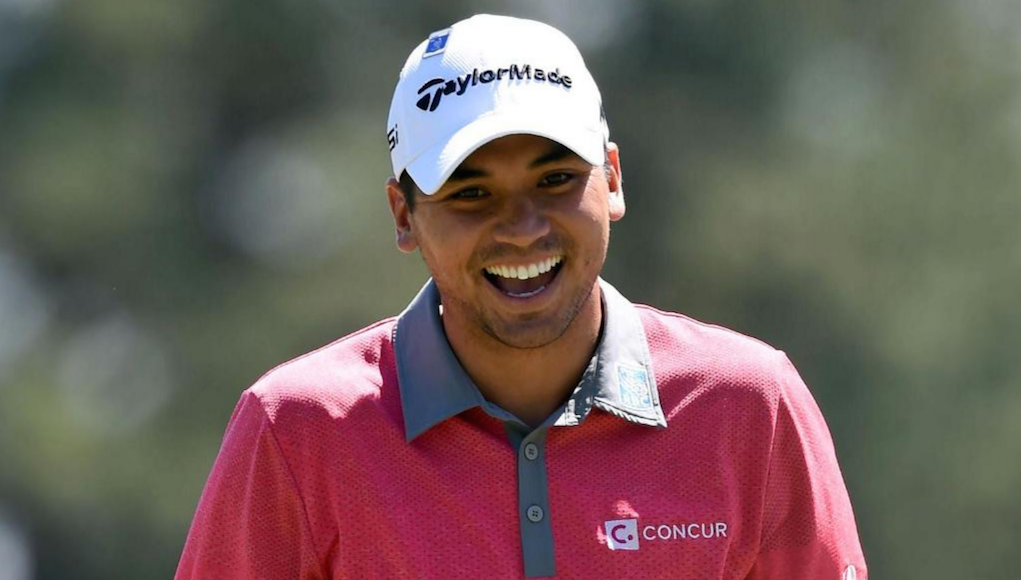Instruction
Haime: Get back to your natural you

I have the great privilege of working with some of the world’s leading athletes (including PGA Tour players and other professionals) in the area of mental and emotional development. When athletes, agents and coaches don’t know what’s wrong with a player, they call me to “fix” it.
It has been my experience that the mental/emotional capabilities are always the separator for golfers — surprisingly few spend adequate time developing the skills that will help them take advantage of physical abilities. There’s a reason why many very accomplished performers declare the importance of the mental/emotional “game,” often stating it accounts for a large slice of the performance pie.
And, it’s important to you.
If you want to jump to the next level in golf, it’s not a bad idea to understand what you can do to improve your mental/emotional game. It will directly impact your results and your enjoyment of the game.
During the coming months, I will coach you and provide you with tried and tested approaches — and real-world examples of how to improve your mental and emotional capabilities. You can tailor the approaches and examples to your game and apply the principles.
Let’s start with something simple.
When I sit with players for the first time — the discovery meeting — I try to find out what makes them tick and how well they know themselves. It’s important for the player (you) to intimately know your strengths, limitations, triggers and the source of your abilities. There are original qualities in all players that are the starting point of the development and these natural instincts are not to be tampered with. They are to be protected and built upon by skillful coaches with a solid, simple, fundamental approach.
Think about all the great players through the years and how original each player is — and how different they all are from each other. Willie Park, Hagen, Jones, Hogan, Nelson, Thomsen, Player, Palmer, Nicklaus, Ballesteros, Faldo, Woods. All of these players are completely different, but they all used their original tendencies and instincts to rise to the top of the game. As Arnold Palmer suggests in the recent Dick’s Sporting Goods commercials — all of these players “swing their swing” and carefully crafted their originality into a world-class game.
In my opinion, golf has become so overcoached that many golfers, perhaps you, get separated from their instincts and natural tendencies and the originality is lost. We are currently seeing this idea with Tiger Woods as he analyzes the game to such an extent and puts his trust in a line of coaches or “consultants” and his natural DNA has faded. The skinny, natural genius has become an overcoached, bulky veteran with eroded instincts. You’ve seen it in recent months where one of the greatest players who ever played has hit some shocking shots from inside 20 yards. That’s the result of far too much thinking and not enough playing.
So, like I would with a world-class player, let’s start there with you. What makes you original and what comes naturally to you? What are your tendencies? What are your restrictions? Carefully consider what you do well, your strengths, what you struggle with, your limitations, what might be a great target of quality, fundamental coaching and what might be something that shouldn’t be tinkered with.
As another exercise to start, consider what creates strong negative emotion in you when you play. What makes you hesitate on the course? What frustrates you? What makes you angry? These are all good questions to begin a self-examination to help you understand the player you are — leading to the player you can be. Self-awareness is critical for a golfer as it is for all athletes and performers. It is the first step in development.
- LIKE92
- LEGIT21
- WOW11
- LOL1
- IDHT2
- FLOP3
- OB1
- SHANK2
Instruction
The Wedge Guy: The easiest-to-learn golf basic

My golf learning began with this simple fact – if you don’t have a fundamentally sound hold on the golf club, it is practically impossible for your body to execute a fundamentally sound golf swing. I’m still a big believer that the golf swing is much easier to execute if you begin with the proper hold on the club.
As you might imagine, I come into contact with hundreds of golfers of all skill levels. And it is very rare to see a good player with a bad hold on the golf club. There are some exceptions, for sure, but they are very few and very far between, and they typically have beat so many balls with their poor grip that they’ve found a way to work around it.
The reality of biophysics is that the body moves only in certain ways – and the particulars of the way you hold the golf club can totally prevent a sound swing motion that allows the club to release properly through the impact zone. The wonderful thing is that anyone can learn how to put a fundamentally sound hold on the golf club, and you can practice it anywhere your hands are not otherwise engaged, like watching TV or just sitting and relaxing.
Whether you prefer an overlap, interlock or full-finger (not baseball!) grip on the club, the same fundamentals apply. Here are the major grip faults I see most often, in the order of the frequency:
Mis-aligned hands
By this I mean that the palms of the two hands are not parallel to each other. Too many golfers have a weak left hand and strong right, or vice versa. The easiest way to learn how to hold the club with your palms aligned properly is to grip a plain wooden ruler or yardstick. It forces the hands to align properly and shows you how that feels. If you grip and re-grip a yardstick several times, then grip a club, you’ll see that the learning curve is almost immediate.
The position of the grip in the upper/left hand
I also observe many golfers who have the butt of the grip too far into the heel pad of the upper hand (the left hand for right-handed players). It’s amazing how much easier it is to release the club through the ball if even 1/4-1/2″ of the butt is beyond the left heel pad. Try this yourself to see what I mean. Swing the club freely with just your left hand and notice the difference in its release from when you hold it at the end of the grip, versus gripping down even a half inch.
To help you really understand how this works, go to the range and hit shots with your five-iron gripped down a full inch to make the club the same length as your seven-iron. You will probably see an amazing shot shape difference, and likely not see as much distance loss as you would expect.
Too much lower (right) hand on the club
It seems like almost all golfers of 8-10 handicap or higher have the club too far into the palm of the lower hand, because that feels “good” if you are trying to control the path of the clubhead to the ball. But the golf swing is not an effort to hit at the ball – it is a swing of the club. The proper hold on the club has the grip underneath the pad at the base of the fingers. This will likely feel “weak” to you — like you cannot control the club like that. EXACTLY. You should not be trying to control the club with your lower/master hand.
Gripping too tightly
Nearly all golfers hold the club too tightly, which tenses up the forearms and prevents a proper release of the club through impact. In order for the club to move back and through properly, you must feel that the club is controlled by the last three fingers of the upper hand, and the middle two fingers of the lower hand. If you engage your thumbs and forefingers in “holding” the club, the result will almost always be a grip that is too tight. Try this for yourself. Hold the club in your upper hand only, and squeeze firmly with just the last three fingers, with the forefinger and thumb off the club entirely. You have good control, but your forearms are not tense. Then begin to squeeze down with your thumb and forefinger and observe the tensing of the entire forearm. This is the way we are made, so the key to preventing tenseness in the arms is to hold the club very lightly with the “pinchers” — the thumbs and forefingers.
So, those are what I believe are the four fundamentals of a good grip. Anyone can learn them in their home or office very quickly. There is no easier way to improve your ball striking consistency and add distance than giving more attention to the way you hold the golf club.
More from the Wedge Guy
- The Wedge Guy: Golf mastery begins with your wedge game
- The Wedge Guy: Why golf is 20 times harder than brain surgery
- The Wedge Guy: Musings on the golf ball rollback
- LIKE85
- LEGIT13
- WOW6
- LOL1
- IDHT0
- FLOP4
- OB1
- SHANK8
Instruction
Clement: Stop ripping off your swing with this drill!

Not the dreaded headcover under the armpit drill! As if your body is defective and can’t function by itself! Have you seen how incredible the human machine is with all the incredible feats of agility all kinds of athletes are accomplishing? You think your body is so defective (the good Lord is laughing his head off at you) that it needs a headcover tucked under the armpit so you can swing like T-Rex?
- LIKE0
- LEGIT2
- WOW2
- LOL0
- IDHT0
- FLOP0
- OB0
- SHANK2
Instruction
How a towel can fix your golf swing

This is a classic drill that has been used for decades. However, the world of marketed training aids has grown so much during that time that this simple practice has been virtually forgotten. Because why teach people how to play golf using everyday items when you can create and sell a product that reinforces the same thing? Nevertheless, I am here to give you helpful advice without running to the nearest Edwin Watts or adding something to your Amazon cart.
For the “scoring clubs,” having a solid connection between the arms and body during the swing, especially through impact, is paramount to creating long-lasting consistency. And keeping that connection throughout the swing helps rotate the shoulders more to generate more power to help you hit it farther. So, how does this drill work, and what will your game benefit from it? Well, let’s get into it.
Setup
You can use this for basic chip shots up to complete swings. I use this with every club in my bag, up to a 9 or 8-iron. It’s natural to create incrementally more separation between the arms and body as you progress up the set. So doing this with a high iron or a wood is not recommended.
While you set up to hit a ball, simply tuck the towel underneath both armpits. The length of the towel will determine how tight it will be across your chest but don’t make it so loose that it gets in the way of your vision. After both sides are tucked, make some focused swings, keeping both arms firmly connected to the body during the backswing and follow through. (Note: It’s normal to lose connection on your lead arm during your finishing pose.) When you’re ready, put a ball in the way of those swings and get to work.

Get a Better Shoulder Turn
Many of us struggle to have proper shoulder rotation in our golf swing, especially during long layoffs. Making a swing that is all arms and no shoulders is a surefire way to have less control with wedges and less distance with full swings. Notice how I can get in a similar-looking position in both 60° wedge photos. However, one is weak and uncontrollable, while the other is strong and connected. One allows me to use my larger muscles to create my swing, and one doesn’t. The follow-through is another critical point where having a good connection, as well as solid shoulder rotation, is a must. This drill is great for those who tend to have a “chicken wing” form in their lead arm, which happens when it becomes separated from the body through impact.
In full swings, getting your shoulders to rotate in your golf swing is a great way to reinforce proper weight distribution. If your swing is all arms, it’s much harder to get your weight to naturally shift to the inside part of your trail foot in the backswing. Sure, you could make the mistake of “sliding” to get weight on your back foot, but that doesn’t fix the issue. You must turn into your trial leg to generate power. Additionally, look at the difference in separation between my hands and my head in the 8-iron examples. The green picture has more separation and has my hands lower. This will help me lessen my angle of attack and make it easier to hit the inside part of the golf ball, rather than the over-the-top move that the other picture produces.


Stay Better Connected in the Backswing
When you don’t keep everything in your upper body working as one, getting to a good spot at the top of your swing is very hard to do. It would take impeccable timing along with great hand-eye coordination to hit quality shots with any sort of regularity if the arms are working separately from the body.
Notice in the red pictures of both my 60-degree wedge and 8-iron how high my hands are and the fact you can clearly see my shoulder through the gap in my arms. That has happened because the right arm, just above my elbow, has become totally disconnected from my body. That separation causes me to lift my hands as well as lose some of the extension in my left arm. This has been corrected in the green pictures by using this drill to reinforce that connection. It will also make you focus on keeping the lead arm close to your body as well. Because the moment either one loses that relationship, the towel falls.


Conclusion
I have been diligent this year in finding a few drills that target some of the issues that plague my golf game; either by simply forgetting fundamental things or by coming to terms with the faults that have bitten me my whole career. I have found that having a few drills to fall back on to reinforce certain feelings helps me find my game a little easier, and the “towel drill” is most definitely one of them.
- LIKE12
- LEGIT2
- WOW2
- LOL0
- IDHT0
- FLOP2
- OB0
- SHANK8
-

 19th Hole1 week ago
19th Hole1 week agoDave Portnoy places monstrous outright bet for the 2024 Masters
-

 19th Hole3 weeks ago
19th Hole3 weeks agoThings got heated at the Houston Open between Tony Finau and Alejandro Tosti. Here’s why
-

 19th Hole1 week ago
19th Hole1 week agoTiger Woods arrives at 2024 Masters equipped with a putter that may surprise you
-

 19th Hole2 weeks ago
19th Hole2 weeks agoReport: Tiger Woods has ‘eliminated sex’ in preparation for the 2024 Masters
-

 19th Hole5 days ago
19th Hole5 days agoTwo star names reportedly blanked Jon Rahm all week at the Masters
-

 19th Hole4 days ago
19th Hole4 days agoNeal Shipley presser ends in awkward fashion after reporter claims Tiger handed him note on 8th fairway
-

 19th Hole3 days ago
19th Hole3 days agoReport: LIV Golf identifies latest star name they hope to sign to breakaway tour
-

 19th Hole2 weeks ago
19th Hole2 weeks agoAddiction, spinal fusion, and scam artists – Everything Anthony Kim revealed in candid interview with David Feherty





















Prime21
Mar 3, 2015 at 1:22 am
Swing your swing……love that one! For the general golf population, that means swing your arms and hands at the ball, powder puff your driver out their 205, & sign for that 95 you just carded. Oh wait, get in tune with your emotions and fine tune your mental approach and that 95 magically drop to 72? Not happening.
Was Faldo’s “swing” #1 before he hooked up with Leadbetter? Woods won a Masters by 12 before he hooked up with Butch? If I’m not mistaken, 2000 was arguably the greatest competitive season ever recorded. But was he using “his swing”? Hogan…. well, he had Hogan. How many times did “his swing” change before he found his secret?
If one lacks talent, the easiest excuse is a poor mental game. Now, I am by no means insinuating that the mental game is not important, but in no way can it override poor swing mechanics. Look at a Tour players stable and you see a trusted advisor in swing, fitness, nutrition, mentality, etc. Why? Because one better have each base covered to compete at the highest level. To believe that there are any short cuts is the quickest way to failure. But until your mechanics are sound or at the very least you are happy with your current distance and accuracy levels and your swing is repeatable, the mental fix alone will do you no good.
While its easy to bash Tiger these days, remember sir, without him your company does not exist. While he may be guilty of taking his pursuit of perfection too far, this same desire created the blueprint for the modern day golfer, one who is strong across the board, not merely in one category.
Though your article is well written, as I’m sure your additional ones will be as well. An offer for a quick fix is nothing more than a ploy to sell more books. In your next article can you answer a question for me? A chain is only as strong as its weakest ………?
Philip
Feb 28, 2015 at 7:03 pm
Very interested as these articles evolve. I have been focusing on “my” abilities and staying away from all the noise in the media and forums since last fall. It has been paying dividends this off-season. Know thyself has always been the wall between most people and success in whatever they desire to a larger degree than they would like to admit. As it is just easier to stick to what is visible to a video camera or recording device. Many seem to want to forget that everyone did pretty good long before our modern technological wonders existed. We don’t have to go back to the stone age, but keeping an open mind to simpler things can often result in quicker success.
morty
Feb 28, 2015 at 7:02 pm
I don’t buy it. Author is manufacturing a dilemma.
How does one become “one of the world’s leading authorities in Emotional Intelligence” anyway?
other paul
Feb 28, 2015 at 9:14 pm
I would ask how his relationship is with his wife. If they have been married for 20 years, have some teenage girls and he still likes and loves her, then he might know a thing.
Otherwise he might not be worth listening to.
John Haime
Mar 2, 2015 at 10:20 am
Many thanks for the comment and a quick reply …
I believe you become one of the world’s leading authorities by working with the world’s leading performers and gaining their trust. A bestselling book also doesn’t hurt. Appreciate the comment – but let the work and writing tell the story – the bio is a result of my experience, my successes and my client list.
Just curious – how is using one’s own natural tendencies a manufactured dilemma? Know thyself has been a critical philosophical fundamental from the beginning of time and it applies to everything – including the games we play.
Thanks again for the comment and hope you enjoy the articles moving forward – and they add some value to your game!
Kenny
Feb 28, 2015 at 5:54 pm
Great article love the simplicity to it..I’ve been playing this game for over thirty years and I agree that the game is over analyzed you have so much information out there …companies coming out with different clubs claiming to do this and that …funny that all the hype doesn’t work. The biggest thing today is the golf ball and some of the technology. When I was coming up as a young golfer we had forged clubs and persimmon headed drivers and balata balls if we were lucky to find one…the pro showed you how to grip the club correctly and then said go play….today it’s not like that everything has to match up and in my opinion it has cost some players there career …The thing that I don’t like is that the people teaching the game today as far as swing coaches want to change what a person has and show him the method that they are teaching…wish my old pro was still around he showed you the fundamentals and that was it…we need people that can teach like the did in the old days…unfortunaley most have died off…
Snowman
Feb 28, 2015 at 7:52 pm
Does anyone realize how much better players are today than they were back in the days when everyone just “went out and played their natural swing” or whatever? Might work for Bubba, Phil, Palmer, and Trevino, but not us. It sounds great too — wack a couple on the range, play 18, grab a beer, repeat..But these days that’s a recipe for calling it quits and becoming a club-tec at golf galaxy..I don’t understand why people are so satisfied by picking on pro golfers for doing everything they can to get better..especially when the level of play is so much higher than previous generations
Philip
Feb 28, 2015 at 8:57 pm
What does maximizing your natural abilities have to do with being just plain ole lazy (though many do just want to hit a few on the range, play 18, drink some beer and eat and head home – doesn’t sound like fun to me, but to them maybe it is. We all have a choice after all). I tried the modern methods and nothing really clicked, went back to trying it on my own – golf isn’t rocket science – and it happened to click for myself. Now that I have a basic foundation that is working I can re-read all those books and watch videos, as well as see a new coach at a new course I started last fall. I’m always watching games on the tube and sometimes I notice something and run to grab a club and practice a few swings in my living room.
For some it is doing it yourself, for others a coach, and even for others video and trackman – the trick is to figure out what is the most efficient and effective method for yourself. Horses for courses. Now if I can just get winter to end a month early……
Gloover
Feb 28, 2015 at 5:37 pm
Great, more inner child work. Someone get the empty chair!